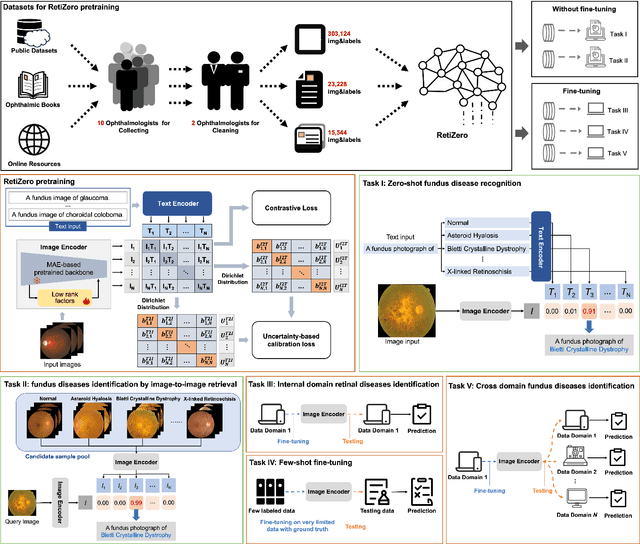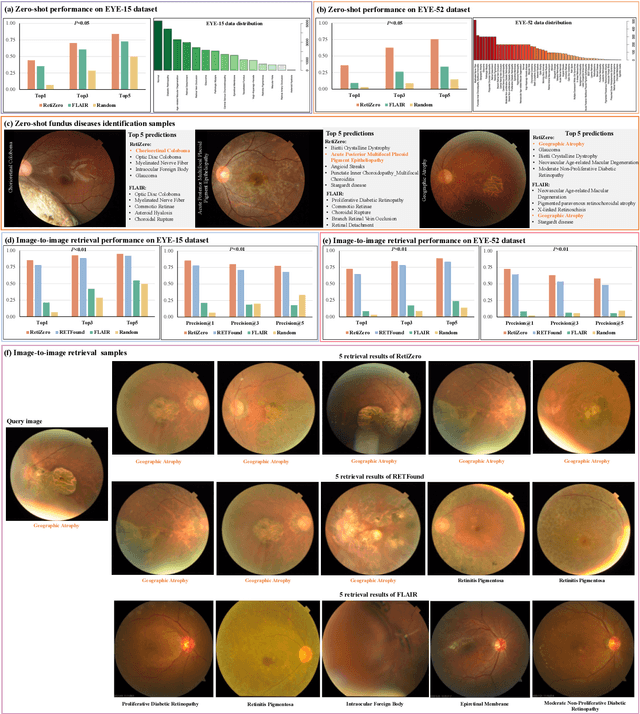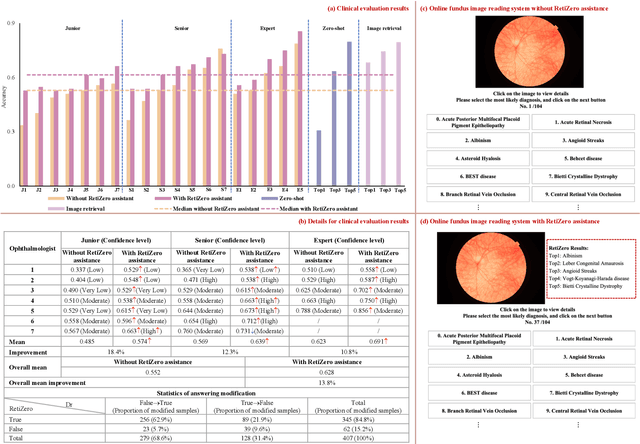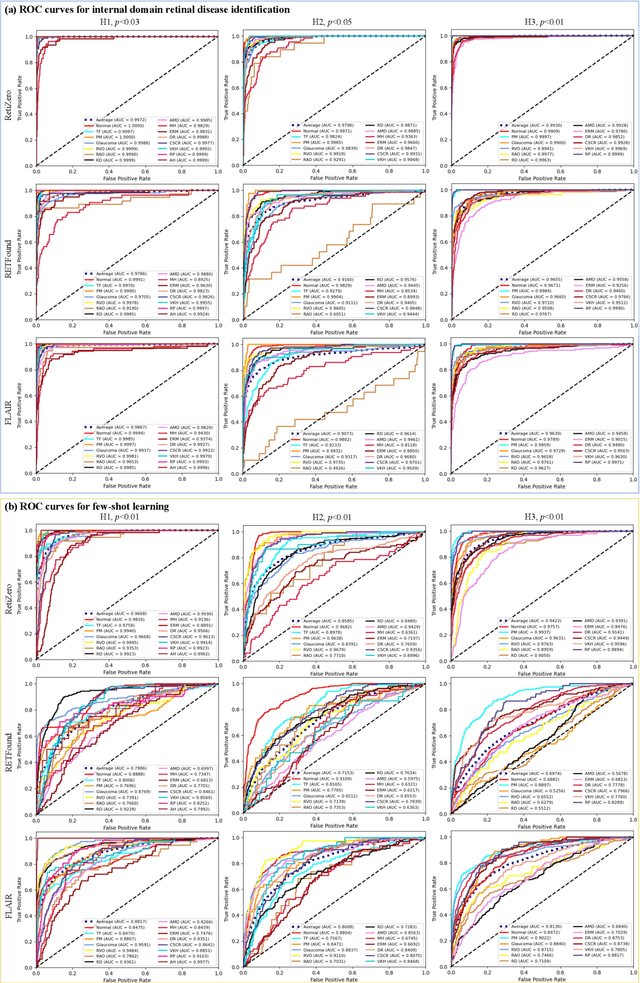Changqing Zhang
Right Question is Already Half the Answer: Fully Unsupervised LLM Reasoning Incentivization
Apr 08, 2025Abstract:While large language models (LLMs) have demonstrated exceptional capabilities in challenging tasks such as mathematical reasoning, existing methods to enhance reasoning ability predominantly rely on supervised fine-tuning (SFT) followed by reinforcement learning (RL) on reasoning-specific data after pre-training. However, these approaches critically depend on external supervisions--such as human labelled reasoning traces, verified golden answers, or pre-trained reward models--which limits scalability and practical applicability. In this work, we propose Entropy Minimized Policy Optimization (EMPO), which makes an early attempt at fully unsupervised LLM reasoning incentivization. EMPO does not require any supervised information for incentivizing reasoning capabilities (i.e., neither verifiable reasoning traces, problems with golden answers, nor additional pre-trained reward models). By continuously minimizing the predictive entropy of LLMs on unlabeled user queries in a latent semantic space, EMPO enables purely self-supervised evolution of reasoning capabilities with strong flexibility and practicality. Our experiments demonstrate competitive performance of EMPO on both mathematical reasoning and free-form commonsense reasoning tasks. Specifically, without any supervised signals, EMPO boosts the accuracy of Qwen2.5-Math-7B Base from 30.7\% to 48.1\% on mathematical benchmarks and improves truthfulness accuracy of Qwen2.5-7B Instruct from 87.16\% to 97.25\% on TruthfulQA.
Dig2DIG: Dig into Diffusion Information Gains for Image Fusion
Mar 24, 2025Abstract:Image fusion integrates complementary information from multi-source images to generate more informative results. Recently, the diffusion model, which demonstrates unprecedented generative potential, has been explored in image fusion. However, these approaches typically incorporate predefined multimodal guidance into diffusion, failing to capture the dynamically changing significance of each modality, while lacking theoretical guarantees. To address this issue, we reveal a significant spatio-temporal imbalance in image denoising; specifically, the diffusion model produces dynamic information gains in different image regions with denoising steps. Based on this observation, we Dig into the Diffusion Information Gains (Dig2DIG) and theoretically derive a diffusion-based dynamic image fusion framework that provably reduces the upper bound of the generalization error. Accordingly, we introduce diffusion information gains (DIG) to quantify the information contribution of each modality at different denoising steps, thereby providing dynamic guidance during the fusion process. Extensive experiments on multiple fusion scenarios confirm that our method outperforms existing diffusion-based approaches in terms of both fusion quality and inference efficiency.
Bridging the Vision-Brain Gap with an Uncertainty-Aware Blur Prior
Mar 06, 2025Abstract:Can our brain signals faithfully reflect the original visual stimuli, even including high-frequency details? Although human perceptual and cognitive capacities enable us to process and remember visual information, these abilities are constrained by several factors, such as limited attentional resources and the finite capacity of visual memory. When visual stimuli are processed by human visual system into brain signals, some information is inevitably lost, leading to a discrepancy known as the \textbf{System GAP}. Additionally, perceptual and cognitive dynamics, along with technical noise in signal acquisition, degrade the fidelity of brain signals relative to the visual stimuli, known as the \textbf{Random GAP}. When encoded brain representations are directly aligned with the corresponding pretrained image features, the System GAP and Random GAP between paired data challenge the model, requiring it to bridge these gaps. However, in the context of limited paired data, these gaps are difficult for the model to learn, leading to overfitting and poor generalization to new data. To address these GAPs, we propose a simple yet effective approach called the \textbf{Uncertainty-aware Blur Prior (UBP)}. It estimates the uncertainty within the paired data, reflecting the mismatch between brain signals and visual stimuli. Based on this uncertainty, UBP dynamically blurs the high-frequency details of the original images, reducing the impact of the mismatch and improving alignment. Our method achieves a top-1 accuracy of \textbf{50.9\%} and a top-5 accuracy of \textbf{79.7\%} on the zero-shot brain-to-image retrieval task, surpassing previous state-of-the-art methods by margins of \textbf{13.7\%} and \textbf{9.8\%}, respectively. Code is available at \href{https://github.com/HaitaoWuTJU/Uncertainty-aware-Blur-Prior}{GitHub}.
Exploring Task-Level Optimal Prompts for Visual In-Context Learning
Jan 15, 2025Abstract:With the development of Vision Foundation Models (VFMs) in recent years, Visual In-Context Learning (VICL) has become a better choice compared to modifying models in most scenarios. Different from retraining or fine-tuning model, VICL does not require modifications to the model's weights or architecture, and only needs a prompt with demonstrations to teach VFM how to solve tasks. Currently, significant computational cost for finding optimal prompts for every test sample hinders the deployment of VICL, as determining which demonstrations to use for constructing prompts is very costly. In this paper, however, we find a counterintuitive phenomenon that most test samples actually achieve optimal performance under the same prompts, and searching for sample-level prompts only costs more time but results in completely identical prompts. Therefore, we propose task-level prompting to reduce the cost of searching for prompts during the inference stage and introduce two time-saving yet effective task-level prompt search strategies. Extensive experimental results show that our proposed method can identify near-optimal prompts and reach the best VICL performance with a minimal cost that prior work has never achieved.
Test-Time Dynamic Image Fusion
Nov 05, 2024Abstract:The inherent challenge of image fusion lies in capturing the correlation of multi-source images and comprehensively integrating effective information from different sources. Most existing techniques fail to perform dynamic image fusion while notably lacking theoretical guarantees, leading to potential deployment risks in this field. Is it possible to conduct dynamic image fusion with a clear theoretical justification? In this paper, we give our solution from a generalization perspective. We proceed to reveal the generalized form of image fusion and derive a new test-time dynamic image fusion paradigm. It provably reduces the upper bound of generalization error. Specifically, we decompose the fused image into multiple components corresponding to its source data. The decomposed components represent the effective information from the source data, thus the gap between them reflects the Relative Dominability (RD) of the uni-source data in constructing the fusion image. Theoretically, we prove that the key to reducing generalization error hinges on the negative correlation between the RD-based fusion weight and the uni-source reconstruction loss. Intuitively, RD dynamically highlights the dominant regions of each source and can be naturally converted to the corresponding fusion weight, achieving robust results. Extensive experiments and discussions with in-depth analysis on multiple benchmarks confirm our findings and superiority. Our code is available at https://github.com/Yinan-Xia/TTD.
COME: Test-time adaption by Conservatively Minimizing Entropy
Oct 12, 2024



Abstract:Machine learning models must continuously self-adjust themselves for novel data distribution in the open world. As the predominant principle, entropy minimization (EM) has been proven to be a simple yet effective cornerstone in existing test-time adaption (TTA) methods. While unfortunately its fatal limitation (i.e., overconfidence) tends to result in model collapse. For this issue, we propose to Conservatively Minimize the Entropy (COME), which is a simple drop-in replacement of traditional EM to elegantly address the limitation. In essence, COME explicitly models the uncertainty by characterizing a Dirichlet prior distribution over model predictions during TTA. By doing so, COME naturally regularizes the model to favor conservative confidence on unreliable samples. Theoretically, we provide a preliminary analysis to reveal the ability of COME in enhancing the optimization stability by introducing a data-adaptive lower bound on the entropy. Empirically, our method achieves state-of-the-art performance on commonly used benchmarks, showing significant improvements in terms of classification accuracy and uncertainty estimation under various settings including standard, life-long and open-world TTA, i.e., up to $34.5\%$ improvement on accuracy and $15.1\%$ on false positive rate.
The Best of Both Worlds: On the Dilemma of Out-of-distribution Detection
Oct 12, 2024Abstract:Out-of-distribution (OOD) detection is essential for model trustworthiness which aims to sensitively identify semantic OOD samples and robustly generalize for covariate-shifted OOD samples. However, we discover that the superior OOD detection performance of state-of-the-art methods is achieved by secretly sacrificing the OOD generalization ability. Specifically, the classification accuracy of these models could deteriorate dramatically when they encounter even minor noise. This phenomenon contradicts the goal of model trustworthiness and severely restricts their applicability in real-world scenarios. What is the hidden reason behind such a limitation? In this work, we theoretically demystify the ``\textit{sensitive-robust}'' dilemma that lies in many existing OOD detection methods. Consequently, a theory-inspired algorithm is induced to overcome such a dilemma. By decoupling the uncertainty learning objective from a Bayesian perspective, the conflict between OOD detection and OOD generalization is naturally harmonized and a dual-optimal performance could be expected. Empirical studies show that our method achieves superior performance on standard benchmarks. To our best knowledge, this work is the first principled OOD detection method that achieves state-of-the-art OOD detection performance without compromising OOD generalization ability. Our code is available at \href{https://github.com/QingyangZhang/DUL}{https://github.com/QingyangZhang/DUL}.
DOTA: Distributional Test-Time Adaptation of Vision-Language Models
Sep 28, 2024



Abstract:Vision-language foundation models (e.g., CLIP) have shown remarkable performance across a wide range of tasks. However, deploying these models may be unreliable when significant distribution gaps exist between the training and test data. The training-free test-time dynamic adapter (TDA) is a promising approach to address this issue by storing representative test samples to guide the classification of subsequent ones. However, TDA only naively maintains a limited number of reference samples in the cache, leading to severe test-time catastrophic forgetting when the cache is updated by dropping samples. In this paper, we propose a simple yet effective method for DistributiOnal Test-time Adaptation (Dota). Instead of naively memorizing representative test samples, Dota continually estimates the distributions of test samples, allowing the model to continually adapt to the deployment environment. The test-time posterior probabilities are then computed using the estimated distributions based on Bayes' theorem for adaptation purposes. To further enhance the adaptability on the uncertain samples, we introduce a new human-in-the-loop paradigm which identifies uncertain samples, collects human-feedback, and incorporates it into the Dota framework. Extensive experiments validate that Dota enables CLIP to continually learn, resulting in a significant improvement compared to current state-of-the-art methods.
Common and Rare Fundus Diseases Identification Using Vision-Language Foundation Model with Knowledge of Over 400 Diseases
Jun 13, 2024



Abstract:The current retinal artificial intelligence models were trained using data with a limited category of diseases and limited knowledge. In this paper, we present a retinal vision-language foundation model (RetiZero) with knowledge of over 400 fundus diseases. Specifically, we collected 341,896 fundus images paired with text descriptions from 29 publicly available datasets, 180 ophthalmic books, and online resources, encompassing over 400 fundus diseases across multiple countries and ethnicities. RetiZero achieved outstanding performance across various downstream tasks, including zero-shot retinal disease recognition, image-to-image retrieval, internal domain and cross-domain retinal disease classification, and few-shot fine-tuning. Specially, in the zero-shot scenario, RetiZero achieved a Top5 score of 0.8430 and 0.7561 on 15 and 52 fundus diseases respectively. In the image-retrieval task, RetiZero achieved a Top5 score of 0.9500 and 0.8860 on 15 and 52 retinal diseases respectively. Furthermore, clinical evaluations by ophthalmology experts from different countries demonstrate that RetiZero can achieve performance comparable to experienced ophthalmologists using zero-shot and image retrieval methods without requiring model retraining. These capabilities of retinal disease identification strengthen our RetiZero foundation model in clinical implementation.
Predictive Dynamic Fusion
Jun 07, 2024Abstract:Multimodal fusion is crucial in joint decision-making systems for rendering holistic judgments. Since multimodal data changes in open environments, dynamic fusion has emerged and achieved remarkable progress in numerous applications. However, most existing dynamic multimodal fusion methods lack theoretical guarantees and easily fall into suboptimal problems, yielding unreliability and instability. To address this issue, we propose a Predictive Dynamic Fusion (PDF) framework for multimodal learning. We proceed to reveal the multimodal fusion from a generalization perspective and theoretically derive the predictable Collaborative Belief (Co-Belief) with Mono- and Holo-Confidence, which provably reduces the upper bound of generalization error. Accordingly, we further propose a relative calibration strategy to calibrate the predicted Co-Belief for potential uncertainty. Extensive experiments on multiple benchmarks confirm our superiority. Our code is available at https://github.com/Yinan-Xia/PDF.
 Add to Chrome
Add to Chrome Add to Firefox
Add to Firefox Add to Edge
Add to Edge